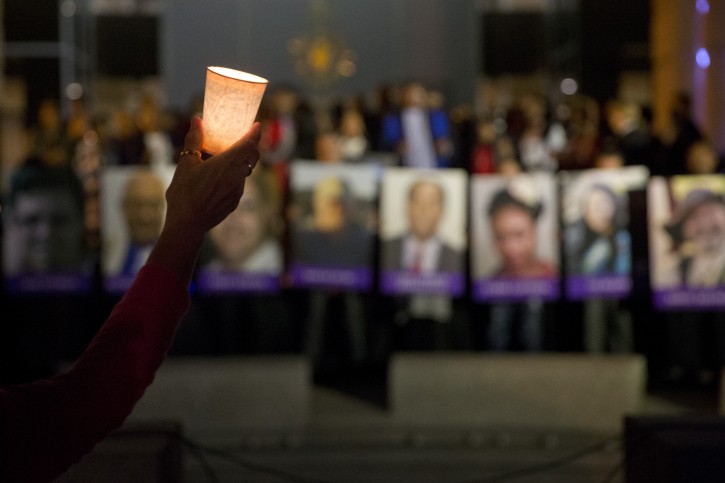
New York – The terror attack at a social services facility in California has become a sobering reminder to companies of how vulnerable workplaces can be when employees are confronted with active shooters.
Since a gun-wielding husband-and-wife team killed 14 and wounded 21 others this month in San Bernardino, California, employers across the country have been reassessing their emergency plans to ensure they are prepared to deal with workplace violence.
More companies have been calling security and human resources experts to get information on how to prepare for an attack. The Los Angeles County Sheriff’s Department said big companies have asked for permission to use its nine-minute video, “Surviving an Active Shooter,” which portrays shootings in an office, a shopping mall and a school.
And “Run. Hide. Fight.,” a six-minute video created by Houston officials on what to do when someone opens fire in the office, has been viewed tens of thousands of times daily since the rampage, the most views since its release around the time of the mass shooting in a Colorado movie theater in 2012. Jackie Miller, the city of Houston’s community preparedness programs manager, said one company asked for 6,000 wallet-sized cards with the mantra from the video, encouraging workers to hide if they can’t run, and fight if they can’t hide.
The company inquiries come as workplace violence in the U.S. has made international headlines. The most recent official statistics are two years old and show the rate of workplace violence to be steady for the previous two decades. Still, deaths resulting from workplace violence were the second leading cause of job fatalities in the U.S. after transportation incidents in 2013, the latest data available, according to the U.S. Bureau of Labor Statistics.
And studies show that most companies are ill-equipped to deal with workplace violence. A government survey in 2005 found that 80 percent of companies that experienced a violent incident didn’t subsequently change workplace violence policies or programs. The survey did not spell out what a policy or program would include.
In practice, companies’ response plans range from highly detailed to nonexistent, security experts say. Brent O’Bryan, vice president of AlliedBarton Security Services, said when he gives seminars on workplace violence awareness across the country, about half the attendees say their companies have no policy. “I am not confident that most employers are prepared,” he says.
Part of the problem is that most companies don’t know how to create a workplace violence plan, says Peter Martin, CEO of AFIMAC Global, a security consulting company based in Miami. Also, there’s a belief by some that workplace violence won’t happen in their office: Indeed, smaller companies may not be particularly concerned about workplace violence following shootings, says Jay Starkman, CEO of Engage PEO, a human resources provider based in Fort Lauderdale, Florida.
“A lot of employers, especially small and medium-sized businesses, believe even in the wake of all the things you read about: ‘It can’t happen here, not in my company, not with the people I know,’” Starkman says.
Some companies that are aware of the potential for workplace violence are preparing in the event of an active shooting. Choice Hotels, for instance, designates employees who are able to block access to elevators and direct other staffers to evacuation routes. Its response plans are continually evolving, but no changes have been made since the San Bernardino shootings, says Anne Hendrick, vice president of human resources for the hotel company.
Some companies also include in their plans an emphasis on preventing violence before it starts. Beer and wine distributor Monarch Beverage, which has about 650 employees at its Indianapolis headquarters, has a doctor and nurse practitioner onsite who are able to handle mental health issues. Supervisors also are trained to recognize changes in workers’ behavior or to alert security if they anticipate trouble from a negative job review.
“Our people are hyper-vigilant to make sure they involve our security team if they have any concerns whatsoever,” says Natalie Roberts, senior vice president with the Indianapolis company, which also has an emergency plan.
But even when companies prepare for workplace violence, the end result can be tragic. Some of the San Bernardino shooting survivors followed workplace violence training they were given about a year before the killings.
Employees at the San Bernardino County Environmental Health Services division had gotten “active shooter” training in the same conference room where the shootings took place. Two survivors said colleagues reacted by trying to do as they were trained — dropping under the tables and staying quiet to avoid attracting attention.
As reported by Vos Iz Neias
